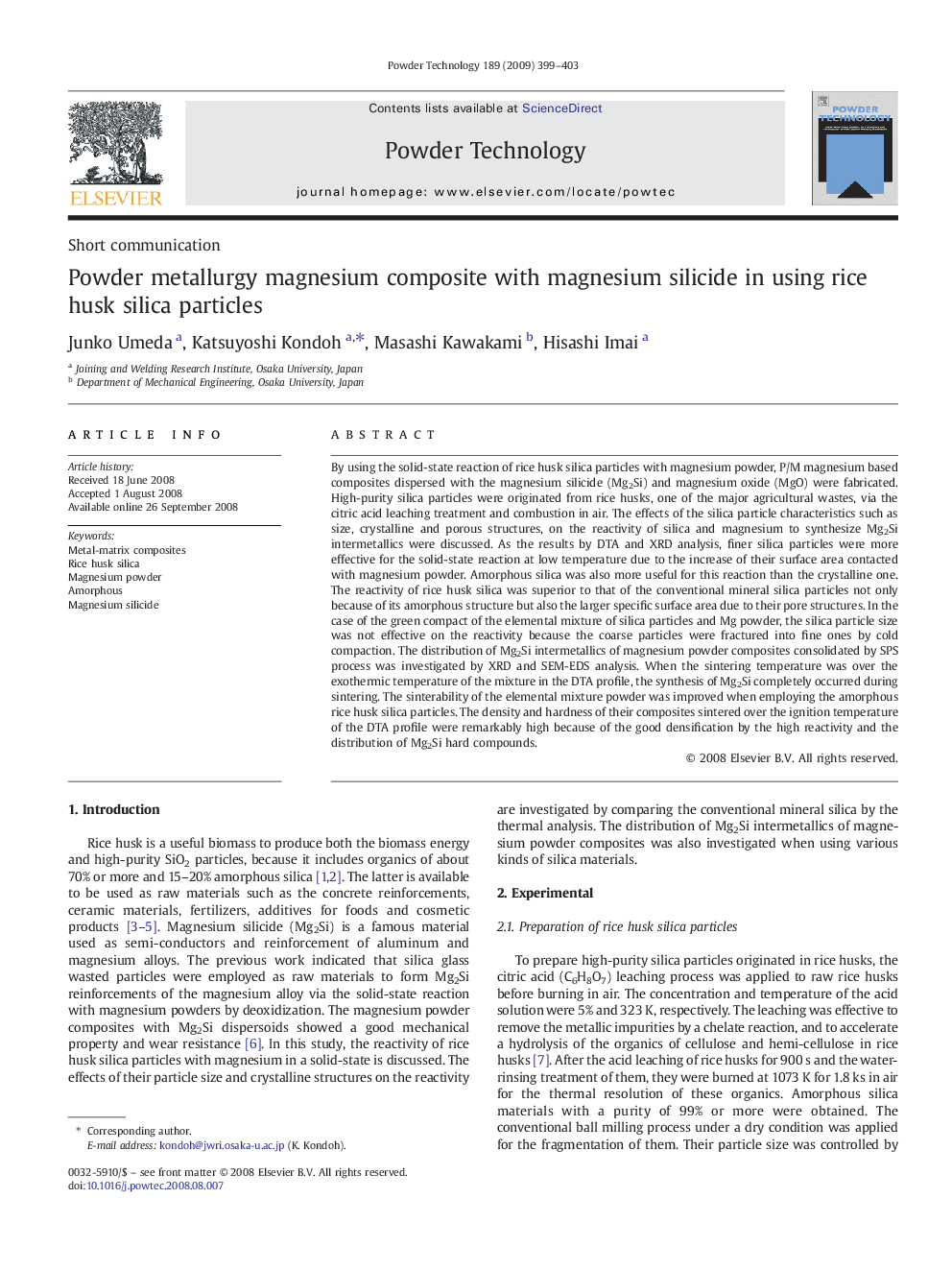| Article ID | Journal | Published Year | Pages | File Type |
|---|---|---|---|---|
| 238385 | Powder Technology | 2009 | 5 Pages |
By using the solid-state reaction of rice husk silica particles with magnesium powder, P/M magnesium based composites dispersed with the magnesium silicide (Mg2Si) and magnesium oxide (MgO) were fabricated. High-purity silica particles were originated from rice husks, one of the major agricultural wastes, via the citric acid leaching treatment and combustion in air. The effects of the silica particle characteristics such as size, crystalline and porous structures, on the reactivity of silica and magnesium to synthesize Mg2Si intermetallics were discussed. As the results by DTA and XRD analysis, finer silica particles were more effective for the solid-state reaction at low temperature due to the increase of their surface area contacted with magnesium powder. Amorphous silica was also more useful for this reaction than the crystalline one. The reactivity of rice husk silica was superior to that of the conventional mineral silica particles not only because of its amorphous structure but also the larger specific surface area due to their pore structures. In the case of the green compact of the elemental mixture of silica particles and Mg powder, the silica particle size was not effective on the reactivity because the coarse particles were fractured into fine ones by cold compaction. The distribution of Mg2Si intermetallics of magnesium powder composites consolidated by SPS process was investigated by XRD and SEM-EDS analysis. When the sintering temperature was over the exothermic temperature of the mixture in the DTA profile, the synthesis of Mg2Si completely occurred during sintering. The sinterability of the elemental mixture powder was improved when employing the amorphous rice husk silica particles. The density and hardness of their composites sintered over the ignition temperature of the DTA profile were remarkably high because of the good densification by the high reactivity and the distribution of Mg2Si hard compounds.
Graphical abstractThe reactivity of rice husk silica was superior to that of the conventional mineral silica particles, and fine silica particles are more effective to form Mg2Si intermetallics due to the increase of the contacted area with magnesium powder. The use of amorphous silica served as a good densification and uniform synthesis of Mg2Si hard compounds of P/M magnesium sintered composite.Figure optionsDownload full-size imageDownload as PowerPoint slide
